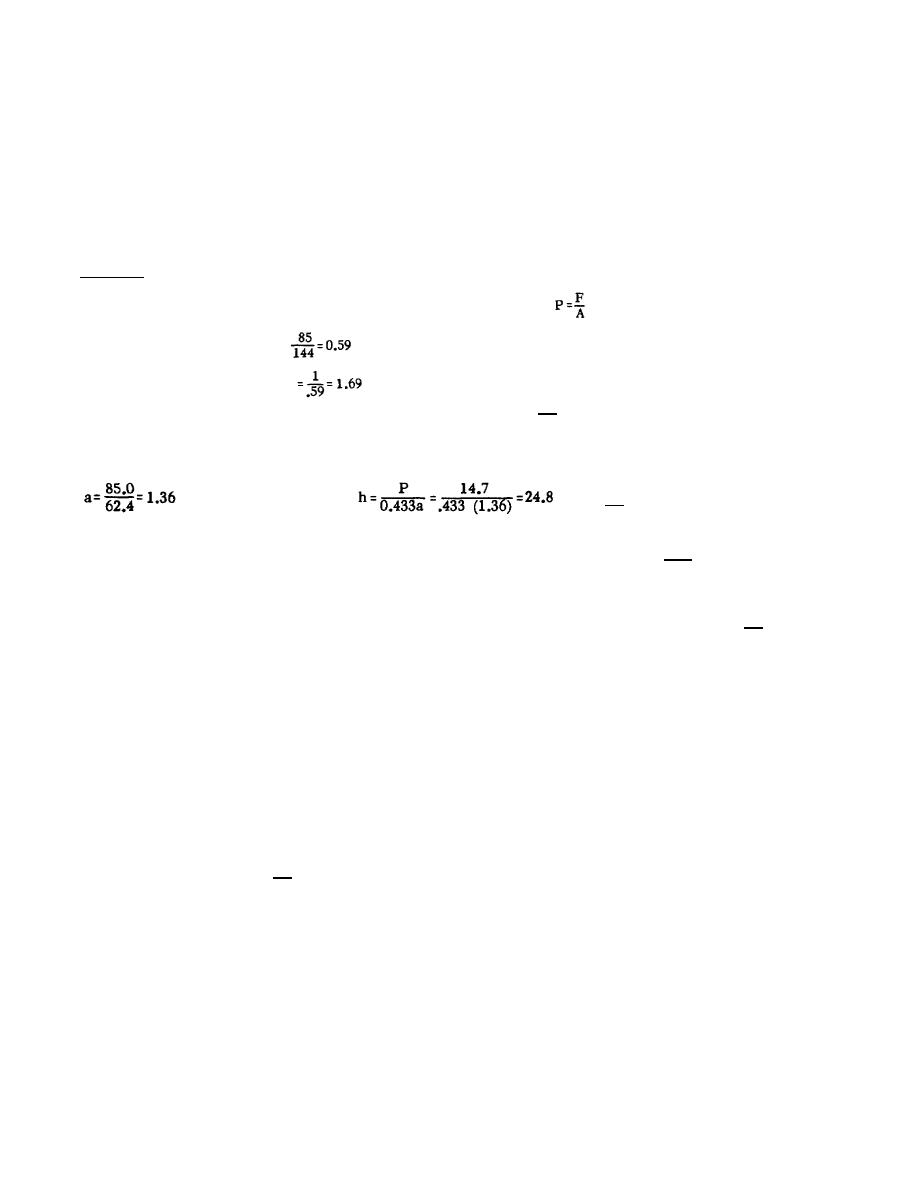
DISCUSSION
Exercise:
8. From paragraph 9, the storage requirement is 1/2 total daily requirement =
1/2 (Avg demand x design population + large users). There are no large users. The
average demand is given as 25 gpd/man.
The design population is the actual (or
expected) population times the capacity factor from table 1. For a population of
10,000, the appropriate capacity factor is 1.15. Hence, the design population is
1.15 (10,000) = 11,500, and the required storage capacity is 1/2 (25 x 11,500) =
143,750 gallons.
10. Pressure is defined as force per unit area, or
.
A 1-foot cube of the
liquid in question weighs 85 pounds, and hence exerts a pressure on the base of 85
pounds per square foot,
pounds per square inch.
Therefore, a 1-foot high
column of the liquid exerts a pressure of .59 pounds per square inch at the base or
1 pound per square inch
feet of the liquid. Therefore, 14.7 pounds of the
liquid require a height of 1.69 x 14.7 = 24.8, say 25 feet.
Alternate solution: From paragraph 11c, for fluids other than water, pressure is
given as P = 0.433 ah where a is the specific gravity of the fluid (ratio of its
weight to the weight of an equal volume of water).
For the liquid in question,
.
From above, then,
, say 25 feet.
12. The maximum pressure allowed in the pipe is 120 psi. For water, 1 psi = 2.31
feet of water.
Therefore, 120 psi is 120 x 2.31= 277.2, say 277 feet of water.
Therefore, 277 is the maximum elevation difference permitted.
13. Referring to figure 13, connect 10 outlets on the left column with 21 shower
heads on the right. This line intersects the center column at a value of 34 gpm.
14. Referring to paragraph 16b,
Allowable, Hf = E1Tk - (ESc + Hreq)
where Hreq
= Preq x 2.31.
Therefore, Hreq
= 25 x 2.31 = 57.75, say 58 feet.
Allowable Hf = 265 - (141 + 58)
= 265 - 199
= 66 feet
3-2



 Previous Page
Previous Page
